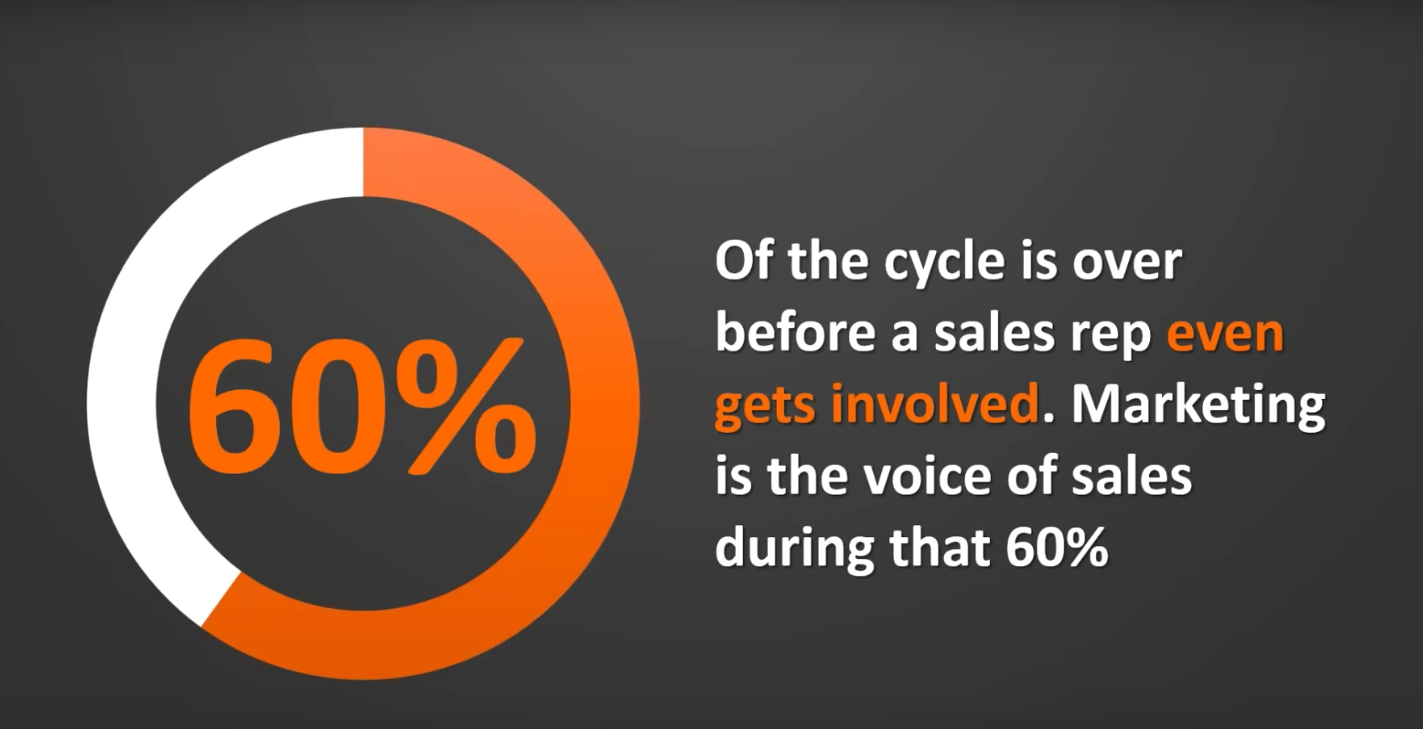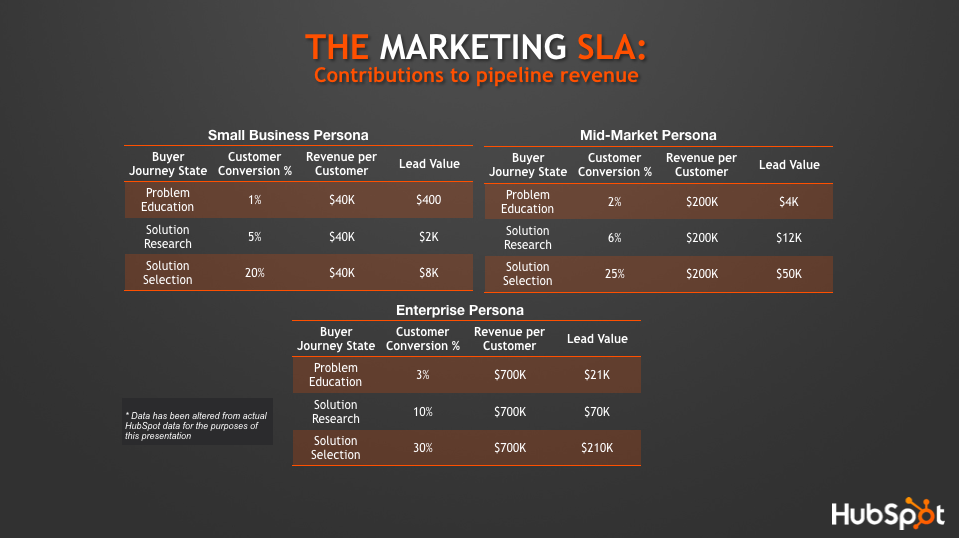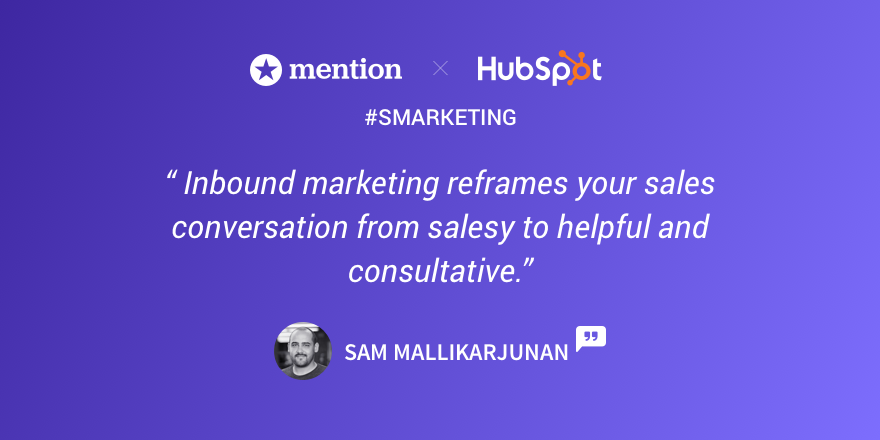
I don’t know about you, but when I want to buy something, I go on Google.
I look at the website, what people are saying about the product, and what alternatives there are.
And that’s what today’s sales cycle is like.
Sam Mallikarjunan, Principal Marketing Strategist at HubSpot, joined us for a webinar where he shared that 60% of the cycle is over before a sales rep even comes in the picture.
Since more than half of the sales process depends on marketing efforts, the two teams need to work together to make sure leads convert into customers.
In 50 minutes, Sam explained how “smarketing” is essential to any company, why it transforms the sales process, and how you can implement it in your organization.
I’ll explain everything here, but here’s the full webinar to hear it firsthand.
What is smarketing?
“Smarketing” means aligning sales and marketing efforts to work towards the same goal.
There are tons of made-up words in marketing. But this one is my favorite. Notice the “s” before “marketing”? Literally letting “sales” lead marketing.
That’s what smarketing is all about.
Every marketing activity should be tied to a sales objective.How is this helping us generate leads for sales? How is this making it easier for sales reps to close their deals?
These are questions sales and marketing teams have to address together.
Why do you need it?
People have changed the way they buy.
Salespeople used to have full control over what information customers get. Want information about the product features? Talk to sales. Need testimonials and reviews? Ask the sales guy.
Fortunately for consumers, that’s not the case anymore. We research on our own. We Google a product on different websites and compare it with five different alternatives. That’s why we need to adjust sales accordingly.
Rather than interrupting with ads and cold calling, we start doing inbound marketing – things like blogging, SEO, PPC, and email nurturing – to attract people to our website and product. These marketing efforts help sales get customers.
How inbound marketing transforms the sales process
Most of you already practice inbound marketing and generate a fair amount of leads. But how does inbound marketing help sales reps sell?
According to Sam, starting the first conversation with a lead is always the hardest part of sales.
This is how most sales reps start a standard cold call:
“Hi, this is Sam from HubSpot. If you have a few minutes I’d love to tell you about our software.”
Leads from inbound marketing, however, aren’t cold. Since they’ve already interacted with your content, it’s easier for sales rep to start a conversation.
Much like it’s a lot easier to talk to someone who’s already “swiped right” on Tinder than it is to chat up a random person at the bar.
This is how sales reps start a call with a marketing-generated lead:
“Hi, this is Sam from HubSpot. I saw you downloaded the guide about using Pinterest for business – what challenges do you have with Pinterest for business? What are your company’s goals and how can I help?”
The conversation can be a lot more personalized and consultative, bringing more value to the lead and making it easier to close the deal.
That sure sounds sweet. But the execution might be a little trickier.
How do you measure everything? How do you make sure the two teams follow through?
Sam suggested two ways.
Two ways to measure smarketing metrics
1. Setting up a service level agreement between marketing and sales
The key to smarketing success is creating a service level agreement (SLA) between marketing and sales.
It should detail commitments from both teams, both what activities they’ll perform and the goals those activities should achieve. For example, marketing would promise to generate a certain number of leads or qualified leads, and sales would agree to make a fixed number of follow-up attempts for each of these leads.
Reevaluate the marketing SLA regularly
As your business targets evolve over time, your SLA will need to, as well. So you’ll want to review it regularly – maybe on a monthly or quarterly basis.
Create a spreadsheet that tracks your SLA calculations with these metrics:
- Number of marketing-generated leads (MQLs)
- Number of MQLs that became customers
- Revenue from those closed deals
- Total revenue closed that month/quarter from MQLs
- Total revenue closed that month/quarter
You’ll know how well your marketing leads are converting and make adjustments accordingly. If conversions are high, it means you may lower your threshold and send sales more leads. If conversions are too low, you may want to be more strict in qualifying leads.
Reevaluate the sales SLA regularly
Ideally, you want your sales reps to make several follow-up attempts for each lead. But that may not be possible if marketing sends them high volumes of leads (which would be great).
So you’ll need to factor in the number of leads they’re getting (based on the marketing SLA), how much time they spend on marketing-generated leads compared to sales-generated leads, how much time they have to spend on each lead, etc.
You can also explore ways to automate some of their activities (especially the email follow-ups) to cut down on their workload without damaging your lead nurturing.
2. Measure marketing’s contribution to the sales pipeline


Marketing has long been perceived as a cost center because when we were doing billboard ads and commercials, it was difficult to tie sales to marketing efforts.
With brands more focused on online marketing, acquisition costs are much easier to measure.
And Sam suggests that there’s no better way to prove the value of marketing efforts than to literally assign a dollar value to every lead generated.
In the example above, a small business prospect currently researching solutions generates, on average, $40k in revenue. The conversion rate for this lead type is 5%. So the value of this type of leads is $2k.
Aside from clarifying the value of marketing, these numbers help sales predict their pipeline, and for marketing to allocate its budget to different efforts.
Sam used his own experience of buying an engagement ring as an example.
He needed a ring for his proposal. He knew nothing about rings. So like most people, he turned to Google.
He found this ebook called “The Guy’s Guide to Jewelry,” downloaded it, and eventually made a purchase.
Say each ring costs $100. If 10% of ebook downloads convert to a sale, then everyone who downloads an ebook is worth $10 in pipeline revenue.
For this company’s marketing team, that means they can spend up to $10 to acquire this lead.
If there’s a 50% conversion rate on this landing page, it means they can spend $5 a visit. And that’s how much they can spend on pay per click advertising, content marketing, etc.
Makes perfect sense, right?
Except the part about each ring costing $100. Sam only wished that were true.
After you’ve got the SLA set up and lead value calculated, you need a process in place. Here’s what Sam suggests:
HubSpot’s 6-step process to implement smarketing
- Have a regular smarketing meeting to align goals. Hold regular meetings for both teams to present what they’re doing and give feedback on what’s working and what’s not.
- Agree on an SLA that relates to revenue and quota. Tie as many marketing activities back to sales as possible. How is this marketing activity helping reps sell more?
- Agree on an SLA about activity. Sales reps should report on how they’re working on the generated leads and be clear on reasons for rejecting any of them.
- Measure the entire funnel. Find out where opportunities for leverage are. See how you can lower lead acquisition costs or increase conversion rates.
- Invest in sales enablement. Use tools that facilitate communication and reporting between marketing and sales teams.
- Respect the customer lifecycle. Customize marketing and sales communication based on what the customer’s interested in and where they are in the buying cycle.
We’ve implemented a similar process at Mention, and since aligning our marketing and sales teams, we’ve tripled our MRR in one year.
We have pretty talented people on the team, but we’re surely not (all) geniuses. If we can do it, you can, too.
Better together
When sales and marketing don’t get along, everybody loses. It’s like seeing people fighting other people in The Walking Dead. People are not the enemy! Kill the zombies!
It makes me sad, but people don’t always do the smartest things.
Now you’re enlightened. You should go spread the word.
If you need extra help, the full webinar has plenty more to offer. More tips from Sam to align your two teams for revenue generation, with lots of movie references and a great Q&A at the end. It’s free, and yours to watch as often as you like.
Have you already tried smarketing? Are you going to? Share your experience in the comments below.








